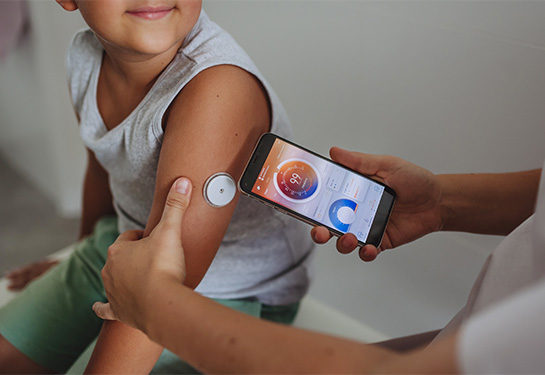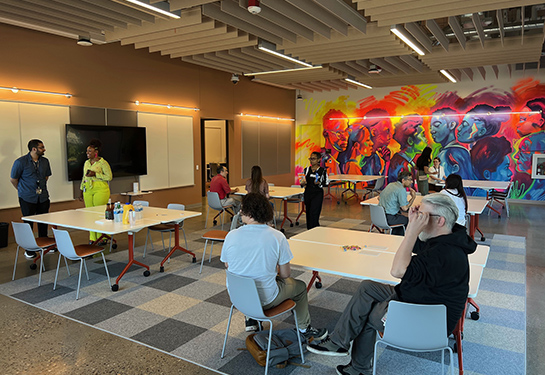Spanish-speaking children with type 1 diabetes face barriers to using medical technology
Many children with type 1 diabetes benefit from technology — including insulin pumps and continuous glucose monitoring (CGM) devices — to help manage their blood sugar level, which is key to staying healthy.
But a new UC Davis study finds that if the children with type 1 diabetes come from predominantly Spanish-speaking households, they are less likely than other children to use insulin pumps and CGM devices. The findings, published recently in JMIR Diabetes, also confirmed previous research that found Spanish-speaking patients with type 1 diabetes are more likely to experience barriers to using this technology.
The study also noted that Spanish-speaking families:
- Tend to stop using insulin pumps at rates higher than their counterparts from primarily English-speaking households.
- Are more likely to experience problems learning to use insulin pumps.
"This is the first study to show high rates of insulin pump discontinuation among Spanish-speaking children. This study also confirmed known disparities in diabetes technology use among children with diabetes,” said Lindsey Loomba, pediatric endocrinologist at UC Davis Children’s Hospital and first author of the study. “It highlights the need for improved Spanish-language teaching about insulin pumps and increased support for families after pump technology has been adopted.”
Lower rates of insulin pump, CGM device use, with many discontinuing use
This study measured rates and patterns of insulin pump and CGM device use among Spanish-speaking children with type 1 diabetes to identify specific barriers to technology use.
The study examined 76 children (38 children from Spanish-speaking homes and 38 from English-speaking homes) with type 1 diabetes. The participants were ages 0-18 and had received care in a diabetes clinic in the past 12 months. The Spanish-speaking children had identified Spanish as their family’s primary language and the English-speaking children had identified English as their family’s primary language. Patients were enrolled in the study over a six-month period.
The study found that only 34% of the Spanish-speaking participants had used insulin pumps, compared to 63% of their English-speaking counterparts. CGM devices were used by 50% of the Spanish-speaking participants versus 79% of their non-Hispanic white counterparts.
Among the group using insulin pumps, the Spanish-speaking participants started use at around the same time after diagnosis as the English-speaking participants. However, Spanish-speaking participants began using the CGM device later.
Overall, families with government sponsored insurance were significantly less likely to use a CGM device, but there was no difference in insulin pump use by health insurance type.
Of the Spanish-speaking participants, 19 of the 38 were current pump nonusers. Thirteen of the 38 had never previously used an insulin pump.
Breaking down barriers to encourage technology use
To better understand specific barriers to technology use, Spanish-speaking participants and their families in the study were asked to complete a written questionnaire in Spanish, detailing their technology use.
The results revealed that Spanish-speaking patients were far more likely to report previously using an insulin pump, but discontinuing its use because they didn’t like the technology (a startling 32%, compared to 0% for the English-speaking patients). The Spanish-speaking patients were also more likely to cite concern over cost, compared to non-Hispanic white participants. They were also less likely to report confidence in learning to use the device.
“This is important information because it points toward a need for better support for our Spanish-speaking patients after insulin pump therapy is initiated,” Loomba said. “Our team is working toward improving educational processes as a result of this study.”
The study also suggests that Spanish-speaking families can benefit from instructions and teaching materials in their native language, as well as increased contact with peer groups using diabetes technology.
Loomba said that a study co-author, Stephanie Crossen, is taking a lead in assisting Spanish-speaking families by participating in a multi-site collaboration called “Optimizing diabetes technology use for Latinx youth through DREAM (Device use Reimagined through Education And Mentorship) virtual peer groups.”
“This project will help inform future education and support efforts," Loomba said. “We will continue to work toward these goals in support of our patients.”
Other study co-authors included Shaila Bonanno, of the University of Washington, Seattle; Diana Arellano, of UCSF Benioff Children’s Hospital; and Nicole Glaser, of UC Davis Health.
This study was funded by a grant from Children’s Miracle Network at UC Davis.




